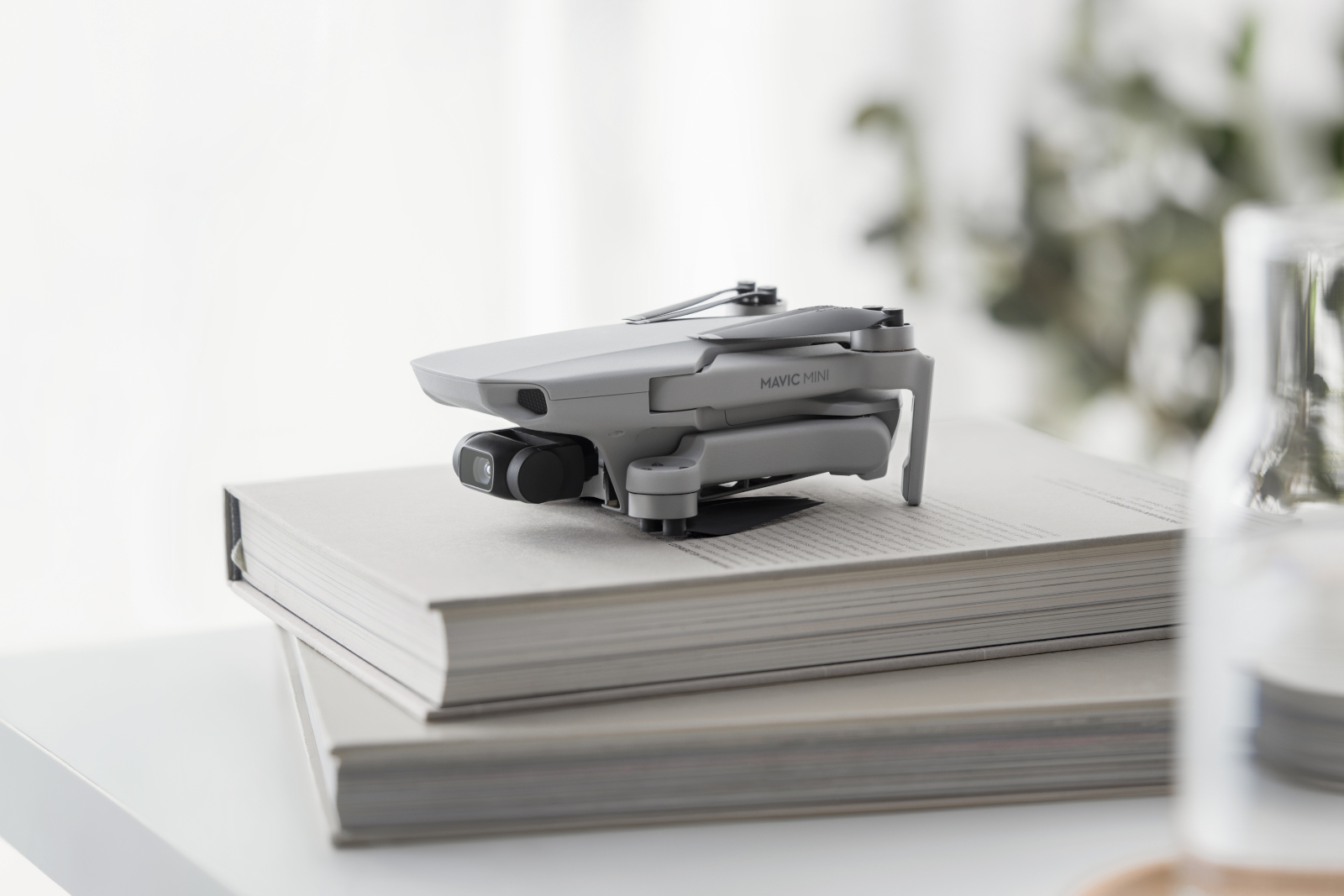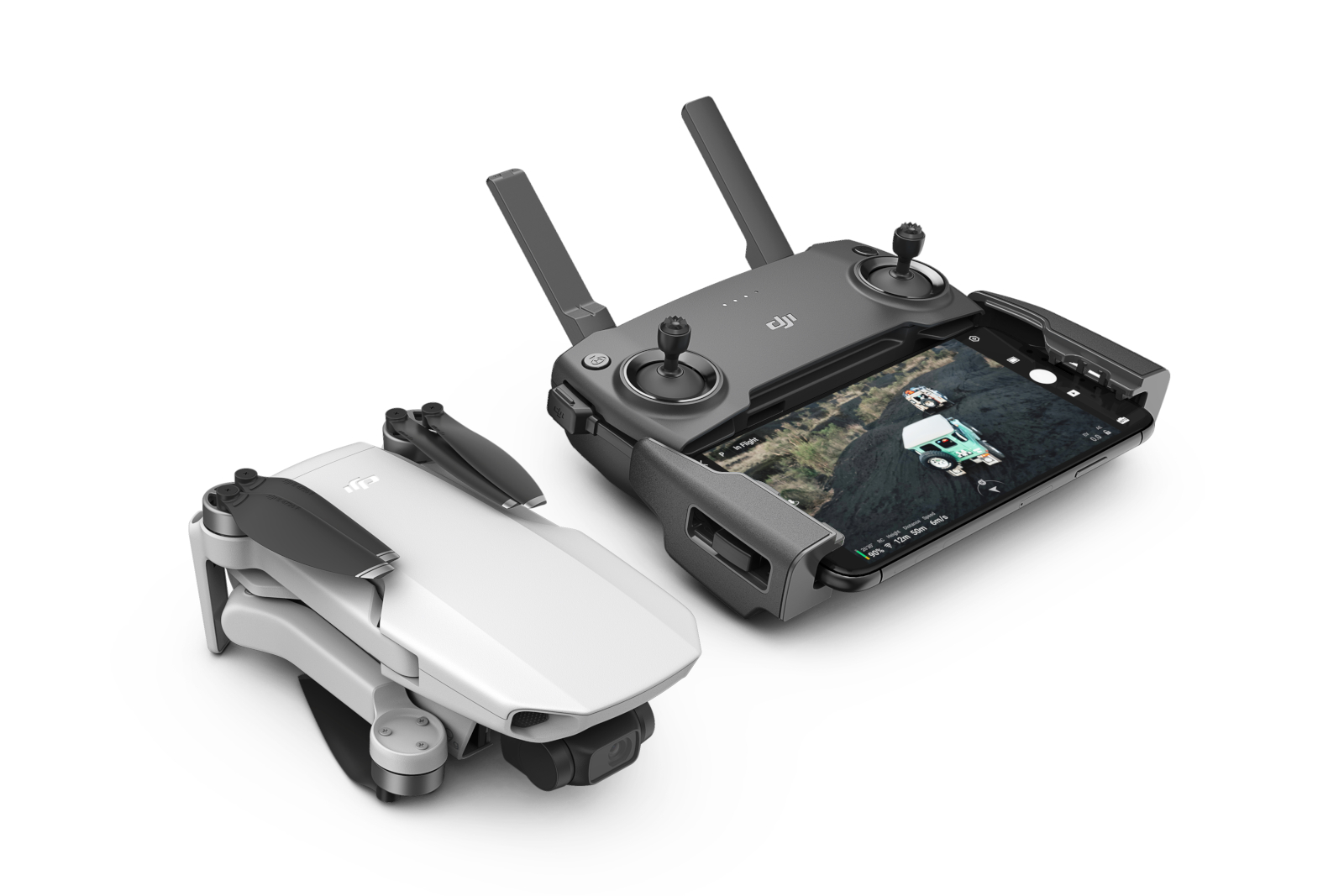
For Russian drone owners, September 27, 2019 was a black day in history. On this date, the rules for the mandatory registration of quadrocopters came into force in the Russian Federation. As if hearing our complaints and realizing the degree of our suffering, DJI engineers hastened to rectify the situation in order to save the sky for all aerial photography enthusiasts and to attract even more people to the world drone fans community. Today, the company released a compact version of the Mavic 2 weighing less than 250 grams: a copter that does not meet the requirements of Government Decision No. 658. But, in addition to this, the novelty has a lot of advantages. We meet DJI Mavic Mini and analyze all its functions.
Body

DJI gave the Mavic Mini a very compact body. Its folded length is only 140 mm - that is, no more than the iPhone X. As one of the most famous analysts among OsitaLV drone guides said earlier, “It's time to sell your old Spark”. The Mavic Mini is more compact than this copter and can be worn directly in the pocket of a jacket or backpack. By design, as the name implies, this is a small copy of the Mavic 2. But there are differences in the design of the battery compartment, propellers, the number of visual sensors, the location and shape of the indicators, as well as the installed camera. In addition, the microUSB connector for charging and connecting to a computer, as well as the microSD card slot, were taken out to the back of the case, under the battery.
At the same time, the features common with the older model are clearly visible: the body has the same streamlined aerodynamic shape, which allows to reduce resistance to air flow, and an identical folding design.
You can prepare a fully assembled drone for flight in just a few seconds: just lay out the rays and propellers of the copter, press the power button, and lift it into the air. And by the way, taking into account the weight (only 249 grams), the Mavic Mini does not fall under the new rules of Decree of the Government of the Russian Federation No. 658, according to which from September 27, 2019 all UAVs weighing more than 250 grams and less than 30 kilograms must be registered Federal Air Transport Agency. Only one gram saves the owners of new items from routine registration.
Flight characteristics

By reducing the weight and size of the drone, DJI had to sacrifice its flight speed. Mavic Mini received new small motors. With their help, the copter develops a speed of up to 47 km / h in sports mode.
There is a slight inconvenience associated with propellers. To completely replace them, it is necessary to spend twice as much time as compared with the Mavic 2. The design is such that each blade is separately mounted to the motor with screws. The kit even has a special screwdriver for this.
Of course, DJI provided the new model with visual sensors and a GPS + GLONASS global positioning system. Below, on the copter’s abdomen, next to the ventilation slots for cooling, there are a couple of infrared sensors and one stereoscopic camera that help the drone determine the surface for landing. The detection range is from 0.5 to 10 meters. The function of automatic return to the take-off point (Return to Home) is available. But DJI advises you to closely monitor the drone's flight path and choose a sufficient height to avoid collisions.
But the baby’s flight time is really impressive - full 30 minutes, provided the weather is calm and the heading speed is 14 km / h. And the great news: the 2400 mAh lithium-polymer battery (17.28 Wh) supports Quick Charge 2.0 fast charging, with which you can recharge the battery in 90 minutes.
Remote controller

DJI is well aware that controlling a drone from a smartphone is not the most convenient solution. Therefore, the Mavic Mini comes with a folding remote control, similar to the Mavic Air or Spark controller. All the main control elements in the usual place: sticks and front panel keys are located directly under the thumbs, the stabilizer wheel and the video recording start button are under the left index finger, and the photo key is under the right one.
Ergonomics at the highest level, it is very convenient to use the remote control and your hands do not get tired over time. It differs from the controller of the older model by the lack of an LCD display with telemetry data and some buttons (for example, C1 / C2). Preparing the controller for work also does not take much time: just expand the antennas, install the smartphone in the clamps for the mobile device, connect it using the cable from the kit, and turn on the remote. And removable sticks that can be hidden in a special compartment in the remote control simplify the storage of the gadget.
Thanks to advanced Wi-Fi technology, DJI was able to achieve high speed signal transmission at a distance of four kilometers (four kilometers for a model with FCC standard (MT1SS5) and two kilometers for a model with CE standard (MT1SD25)), as well as broadcast HD-video with 30 fps from the drone's camera. But it is worth noting that you can’t fly a copter without a controller: it does not support control from smartphones using a wireless network.
The battery capacity is 2600 mAh. This is enough to work from two to six hours (depending on the operating system of your mobile device).
Camera

Now for the fun part: consider the Mavic Mini. The quadcopter has a 12-megapixel module with a 1 / 2.3-inch CMOS matrix, a lens with a viewing angle of 83 degrees and a focal length of 24 mm. The aperture size is f / 2.8, and a three-axis mechanical stabilizer is responsible for smooth frames.
In appearance and characteristics, the camera is very similar to that in Osmo Pocket. But at the same time, the lens itself is slightly shifted to the right, the maximum video resolution is 2.7K, and the shutter speed range is 4-1 / 8000 sec. But the photosensitivity of the matrix is identical to a pocket camera: from 100 to 3200 ISO units.
A few more words about the stabilizer: its working range of inclination varies from - 90 ° to + 20 ° and it is protected by a special cover for safe transportation. Sensitivity is on top, as with all DJI products. In the settings, you can adjust the speed with which the camera changes its tilt, the stabilizer reaction after the end of the movement, activate the movement of the stabilizer following the movements of the drone, etc.
Videos and photos taken with the camera are saved on a microSD card with a maximum capacity of 256 GB. The copter does not have internal memory.
Shooting modes

Agree, for such a small copter, the characteristics are quite interesting. But how is the Mavic Mini doing with shooting modes? It should be noted right away that the drone parameters are configured, controlled and video broadcasted through the new DJI Fly application. It is designed specifically for the new product, the intuitive interface simplifies the piloting of the Mavic Mini, the built-in editor contains various templates for video editing, and a primer for beginners will help you learn the basics of flight.
In DJI Fly, you will find the Quickshot mode with the familiar Dronie submodes (shooting diagonally away from the subject), Circle (shooting around the subject), Helix (spiral shooting around the subject), Rocket (shooting the subject while climbing camera pointing vertically down). For flights in confined spaces and for recording ultra-smooth videos, a special cinematic mode is provided. And for shooting photos, ordinary single-frame and interval shooting are available.
In all senses, free flight!

It is, of course, quite difficult to call the new product a professional tool for photo and video shooting. Mavic Mini is definitely a model for amateurs or those who are just thinking about a career as an aerial photographer. But, at the same time, the functionality of the drone, given its dimensions, is very impressive. A long flight time, and an amazing stabilizing system, and a high-quality camera, albeit not supporting 4K video, and various creative shooting modes, the ability to quickly charge, and so on. All these advantages allow you to close your eyes to some minor disadvantages. And do not forget one of the most important features of the Mavic Mini: the drone weighs so little that it does not fall under the new rules for registering copters in the Russian Federation.